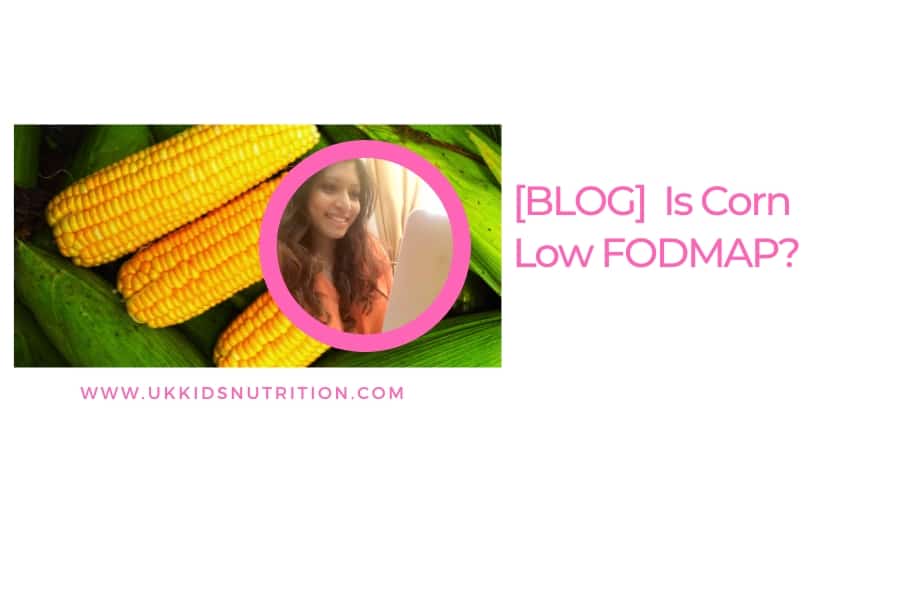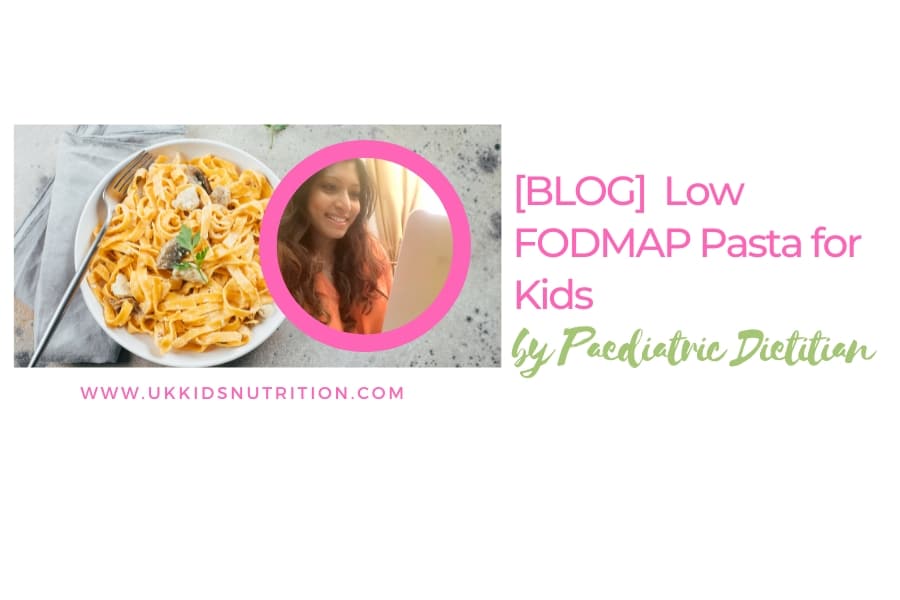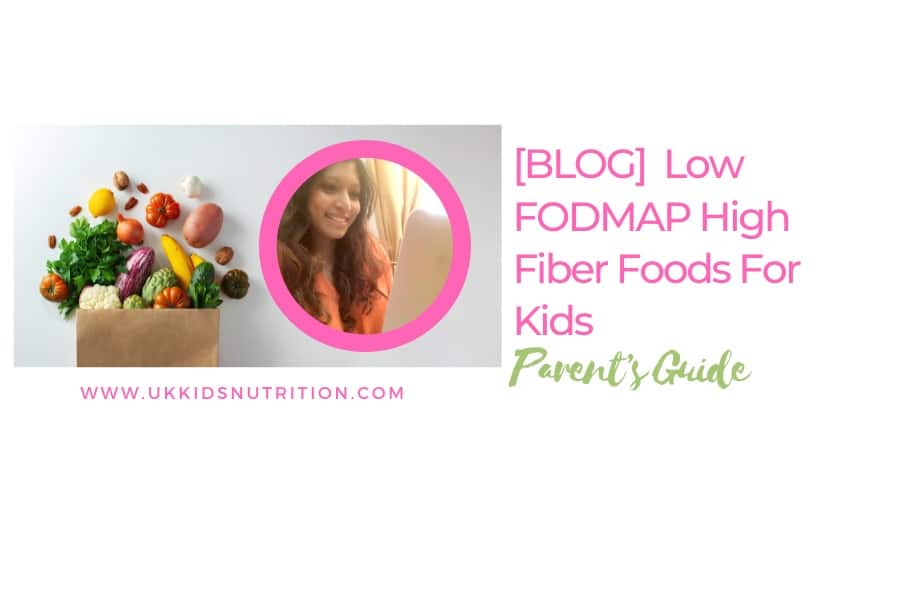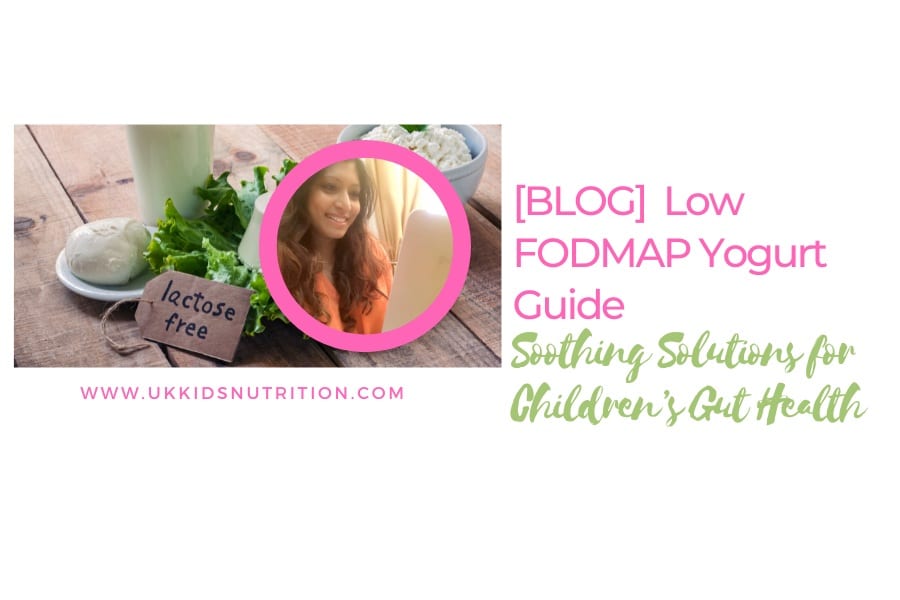If you’re a parent wondering whether corn is suitable for your child during the low FODMAP diet trial, you’ve come to the right place!
Let’s explore the intricate world of FODMAPs, decode corn’s composition, and determine its suitability for those dealing with digestive issues related to irritable bowel syndrome (IBS).
This article aims to provide you with the knowledge needed to make informed decisions about incorporating corn into a low FODMAP diet. Let’s get started!

Is Corn Low FODMAP?
When embarking on the low FODMAP diet trial, many parents question the FODMAP status of corn.
The good news is that corn is generally considered low in FODMAPs.
This means it can be a suitable vegetable for children and adults dealing with IBS-related constipation or diarrhoea.
However, it’s important to note that there are a few exceptions to keep in mind.
Corn does contain small amounts of fructans, which fall under the category of FODMAP foods.
As FODMAPs can accumulate with larger portion sizes, it’s crucial to be mindful of this during the diet trial.
Remember, controlling portion sizes plays a vital role in managing your child’s overall FODMAP intake.
In the following sections, we’ll delve deeper into the FODMAP content of corn and low FODMAP serving sizes.
Serving Size and FODMAPs: Why It’s So Important
When it comes to managing your child’s digestive issues, one aspect often overlooked is serving size and how much to serve your child at mealtimes.
Understanding the significance of portion control is essential for your child’s FODMAP journey.
Let’s take corn thins as an example.
While one corn thin is considered low in FODMAPs, exceeding the recommended portion can push the fructan limit, making them high in FODMAPs according to Monash University ratings.
By paying attention to serving sizes, you can ensure your child stays within the recommended FODMAP limits during the low FODMAP diet trial.
Remember, small adjustments in portion sizes can make a big difference in your child’s symptoms.
The FODMAP in Corn
To fully comprehend how corn affects digestive health, it’s crucial to understand its FODMAP content and FODMAP serving sizes.
Is Corn on the Cob Low FODMAP?
Corn on the cob can be included in a low FODMAP diet, but portion size is key.
A serving size of about ¾ of a cob is considered low in FODMAPs.
It’s essential to monitor this to avoid triggering IBS symptoms due to higher FODMAP content in larger servings.
Fresh corn contains sorbitol, which is a type of FODMAP that may cause discomfort for some children. However, when it comes to corn, it’s the fructans that demand attention.
Larger portion sizes of corn can increase the fructan levels, turning it into a higher FODMAP food. It’s important to be aware of this when incorporating corn into your child’s diet.
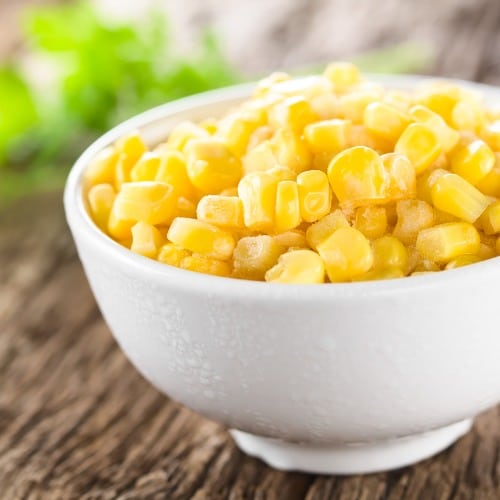
Fresh and Tinned Corn: Understanding FODMAP Levels
Although corn is generally considered an example of low FODMAP foods, fresh corn, particularly in larger quantities, can become a high FODMAP food due to its sorbitol and fructan content.
On the other hand, the canning process generally reduces FODMAP levels in food, and sweetcorn is no exception.
Canned Baby Corn
The good news is that canned or tinned baby corn is also a low FODMAP corn.
Canned baby corn is a low FODMAP food, providing an IBS-friendly low FODMAP snack option during the elimination phase.
It can also be easily incorporated into low FODMAP dinner recipes.
Canned Corn Kernels
Similarly, canned sweet corn kernels are generally low in FODMAPs, allowing children to enjoy their favourite vegetables while adhering to the low FODMAP diet.
However, it’s crucial to be mindful of portion sizes.
If children eat large quantities of canned corn kernels, this increases their intake of fructans which can potentially trigger diarrhea or tummy pain in children.
To strike a healthy pain-free balance, offer your child canned corn kernels in moderate portion sizes.
This way, your child won’t feel deprived and will be able to enjoy the delicious flavours of sweetcorn without compromising their FODMAP management.
How Much Frozen Corn is Low FODMAP?
When it comes to determining how much frozen corn is low FODMAP, a helpful approach is to treat frozen corn products just like their natural or raw counterparts.
This means considering the FODMAP content of fresh corn and applying the same guidelines to frozen corn.
For instance, if a small portion of fresh corn is considered low in FODMAPs, you can use that as a reference for determining a suitable serving size for frozen corn.
By treating frozen corn in this way, you can ensure that you’re making informed choices and managing your child’s FODMAP intake effectively during their low FODMAP diet trial.
Canned Creamed Corn
For young children, a small amount of canned creamed corn is considered a low FODMAP food.
They can enjoy it freely without worry. However, as children grow older and for adults, it’s important to be mindful of serving sizes.
Larger portions of canned creamed corn can be a significant source of fructans, which may trigger symptoms like tummy pain and changes in stool patterns for those sensitive to fructans.
Controlling portion sizes and encouraging moderate consumption of canned creamed corn is key.
Paying attention to portion sizes is key (versus complete avoidance of corn products).
This way, your child can enjoy variety in their diet whilst effectively managing their FODMAP intake.
Other Corn Products
Let’s discuss other corn-based products, such as cornflakes, corn crisps, corn tortillas, corn chips, and polenta.
Popcorn: A Low FODMAP Snack Option
Is Popcorn Low FODMAP?
Popcorn, a popular snack among children and adults alike, is indeed low in FODMAPs when prepared plain and consumed in moderation.
This makes it a great, child-friendly snack option for those following a low FODMAP diet.
It’s important to avoid high FODMAP toppings such as garlic or onion powder and to be cautious with butter for those with lactose intolerance.
Air-popped popcorn seasoned with a little salt can be a safe and enjoyable treat for your child.
Is Frozen Corn Low FODMAP?
Frozen corn, similar to its fresh counterpart, is low in FODMAPs when consumed in moderation.
Are Corn Tortillas Low FODMAP?
Corn tortillas can be a low FODMAP option, provided…
Is Peas Low FODMAP?
Peas are low in FODMAPs in small quantities.
For more information, see Are Peas Low FODMAP for IBS Kids?
Is Canned Corn Low FODMAP?
Canned corn, especially canned sweet corn kernels, is typically low in FODMAPs…
Are Corn Chips Low FODMAP?
In moderation and without high FODMAP additives, corn chips can be a suitable snack.
Is Tomato Low FODMAP?
Tomatoes are generally low in FODMAPs and can be safely included.
Are Pinto Beans Low FODMAP?
Pinto beans are higher in FODMAPs but children can easily incorporate this in small quantities.
Is Corn Low FODMAP Diet Friendly?
As you can see, corn, in many of its forms, can fit well into a low FODMAP diet.
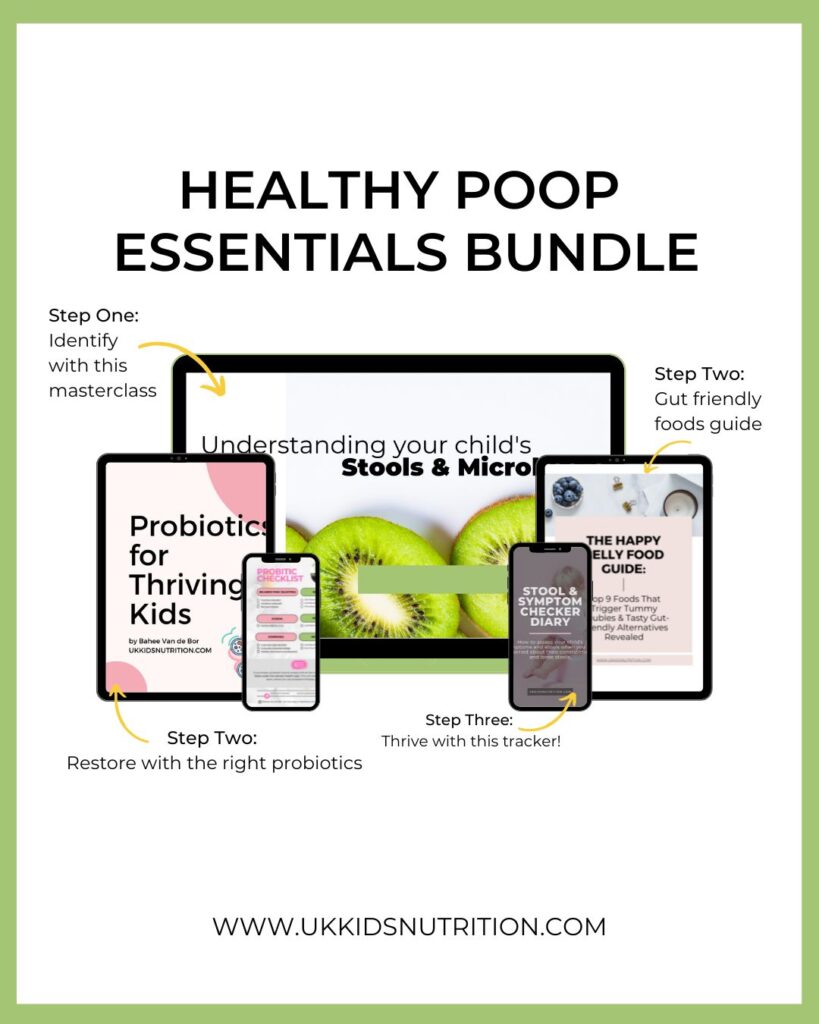
Corn Flakes
A small serving of cornflakes falls within the low FODMAP range, making it suitable for most children during the low FODMAP diet trial.
However, it’s important to note that older children may consume larger portion sizes, exceeding the recommended limit.
This can easily make cornflakes unsuitable for the low FODMAP trial.
Some brands have analyzed their cornflakes for their unique FODMAP levels, providing valuable information on safe quantities for children and adults.
Do look out for these certified products which can be a useful addition to your child’s diet.
Corn Crisps
As for corn crisps, a small bag is typically low in FODMAPs, offering a satisfying and safe snack option for kids.
However, it’s essential to read the nutrition labels to ensure there are no other added sources of FODMAPs, as certain flavours or seasonings may contain hidden high FODMAP ingredients.
By selecting corn crisps without additional FODMAPs, you and your child can indulge in a tasty treat worry-free.
Corn Tortillas and Corn Chips
Corn tortillas and corn chips can also be part of a low FODMAP diet when consumed in moderation.
These products, however, often come with added ingredients, so it’s crucial to check for any high FODMAP additives.
Opting for plain varieties usually works best.
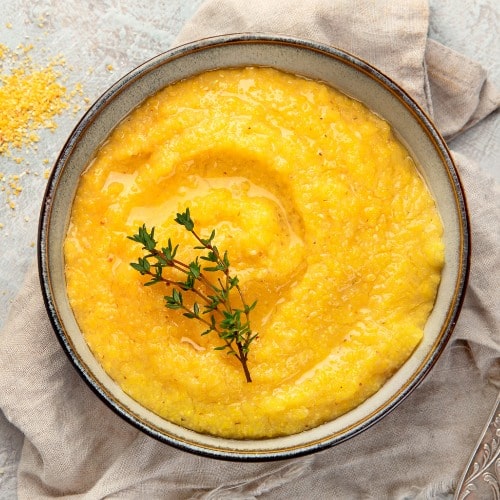
Polenta: A Naturally Low FODMAP Grain
The good news for parents and children following a low FODMAP diet is that polenta, also known as cornmeal, is a naturally low FODMAP grain.
This makes it an excellent choice for those managing IBS symptoms. Polenta is made from ground corn and offers a comforting, versatile base for a variety of dishes.
Whether served creamy or grilled, polenta can be a delightful addition to your child’s diet.
It’s a fantastic alternative to pasta or rice and can be flavoured in numerous ways to suit your child’s palate.
When using polenta, it’s important to ensure that no high FODMAP ingredients are added to the mix.
This maintains its low FODMAP status and makes it a safe, delicious option for children with IBS.
Incorporating polenta into meals not only provides a tasty variety but also helps in maintaining a balanced and nutritious diet.
It’s rich in carbohydrates and provides a source of energy, which is especially important for growing children.
By including polenta in your child’s diet, you’re offering them a delightful and safe food option that aligns with the principles of the low FODMAP diet, ensuring their continued comfort and well-being.
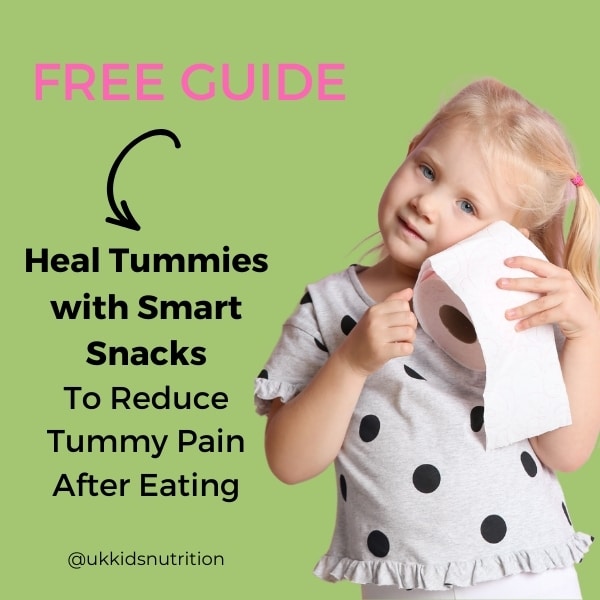
Corn Flour and Corn Starch in a Low FODMAP Diet
Is Corn Flour Low FODMAP?
Corn flour, as we’ve discussed, is a versatile and low FODMAP ingredient, perfect for thickening sauces and use in baking.
Is Corn Starch Low FODMAP?
Similarly, corn starch is another gluten-free thickening agent that’s low in FODMAPs. It can be safely used in cooking and baking for children on a low FODMAP diet.
Sweeteners and Their FODMAP Grading
Is Corn Syrup Low FODMAP?
Corn syrup is made by extracting the sugars from cornstarch, and during this process, some of the FODMAPs are removed.
Corn syrup is considered FODMAP friendly as it mainly contains glucose.
It may also be listed as glucose syrup or dextrose.
Is High Fructose Corn Syrup Low FODMAP?
Monash University explains this information in good detail.
In high fructose corn syrup, the corn syrup contains more than 50% of excess fructose.
The short answer is that high fructose corn syrup is not low FODMAP.
In the UK and Europe, high fructose corn syrups or corn syrups containing more than 50% fructose are listed as fructose-glucose syrup.
These syrups are the same as high fructose corn syrup and are high FODMAP.
Some examples of foods containing high fructose corn syrup include McVities hobnobs, Jaffa cakes, and Mr Kipling Bakewell Slices.
Bottomline
As you can see, corn can be a suitable option for children on a low FODMAP diet.
You just need to be mindful of portion sizes and potential FODMAP content.
While corn is generally low in FODMAPs, larger portions or certain corn-based products may contain higher levels of fructans, which can trigger symptoms in children with IBS.
If you’re seeking expert assistance in managing your child’s tummy troubles and ensuring their nutritional needs are met, book a free gut assessment.
The Happy Belly Club is dedicated to helping families find solutions to children’s IBS-related tummy troubles.
Don’t let tummy issues hinder your child’s well-being – take the first step towards a happier, healthier belly today!

Let Me Help
Would you like to meet a children’s dietitian who has successfully helped families solve their nutrition problems from around the world?
No matter what you are worried about, I’ll help you manage these with confidence.
